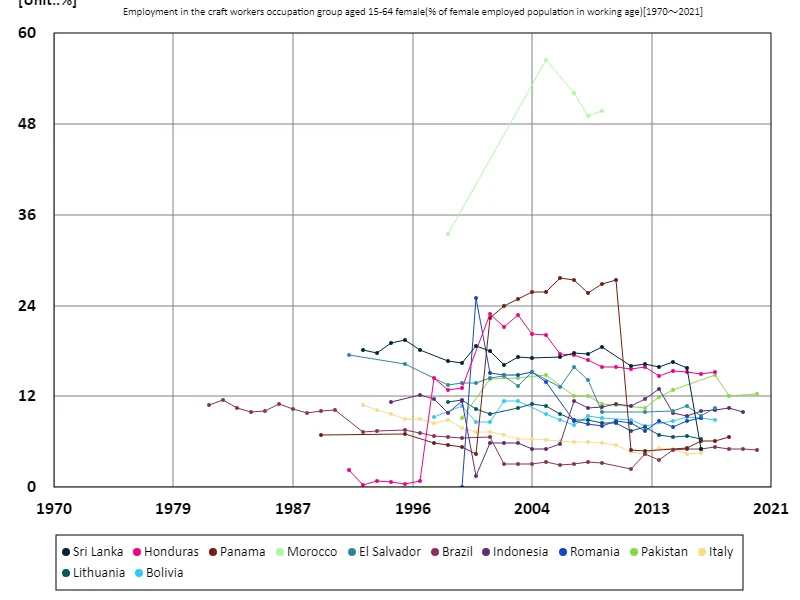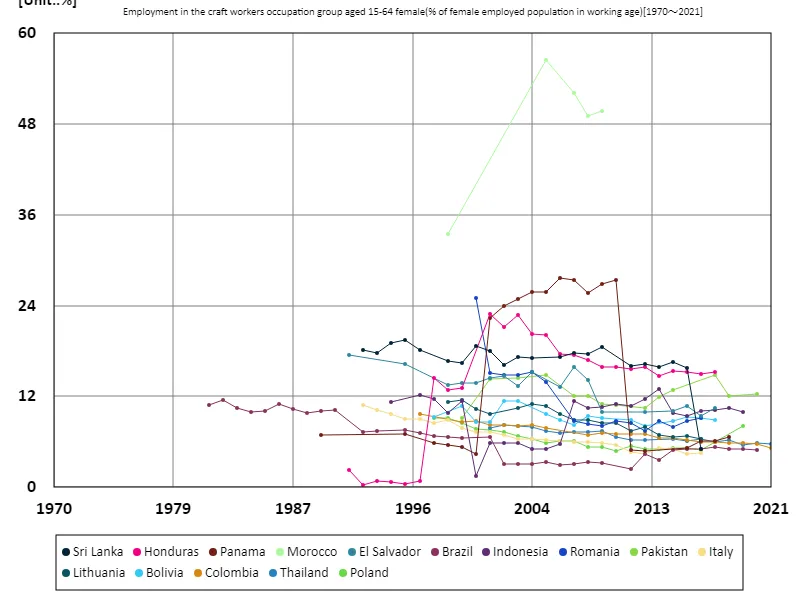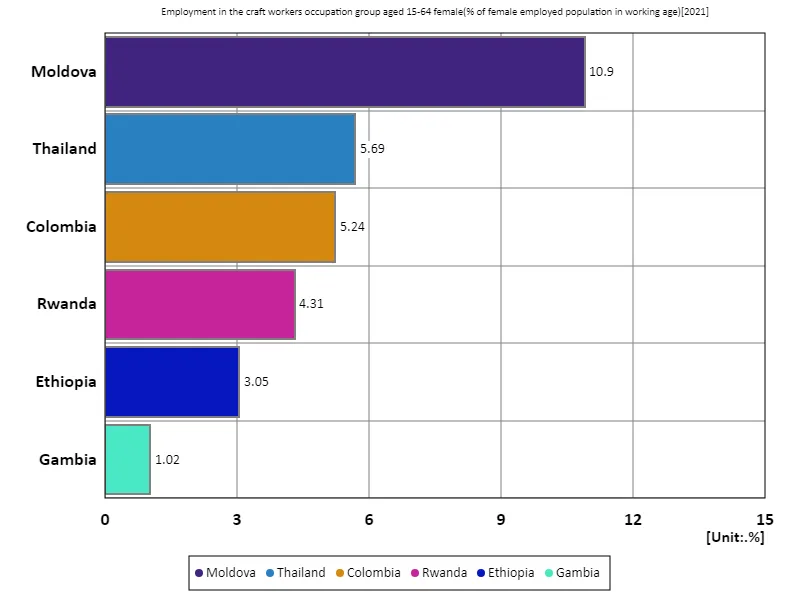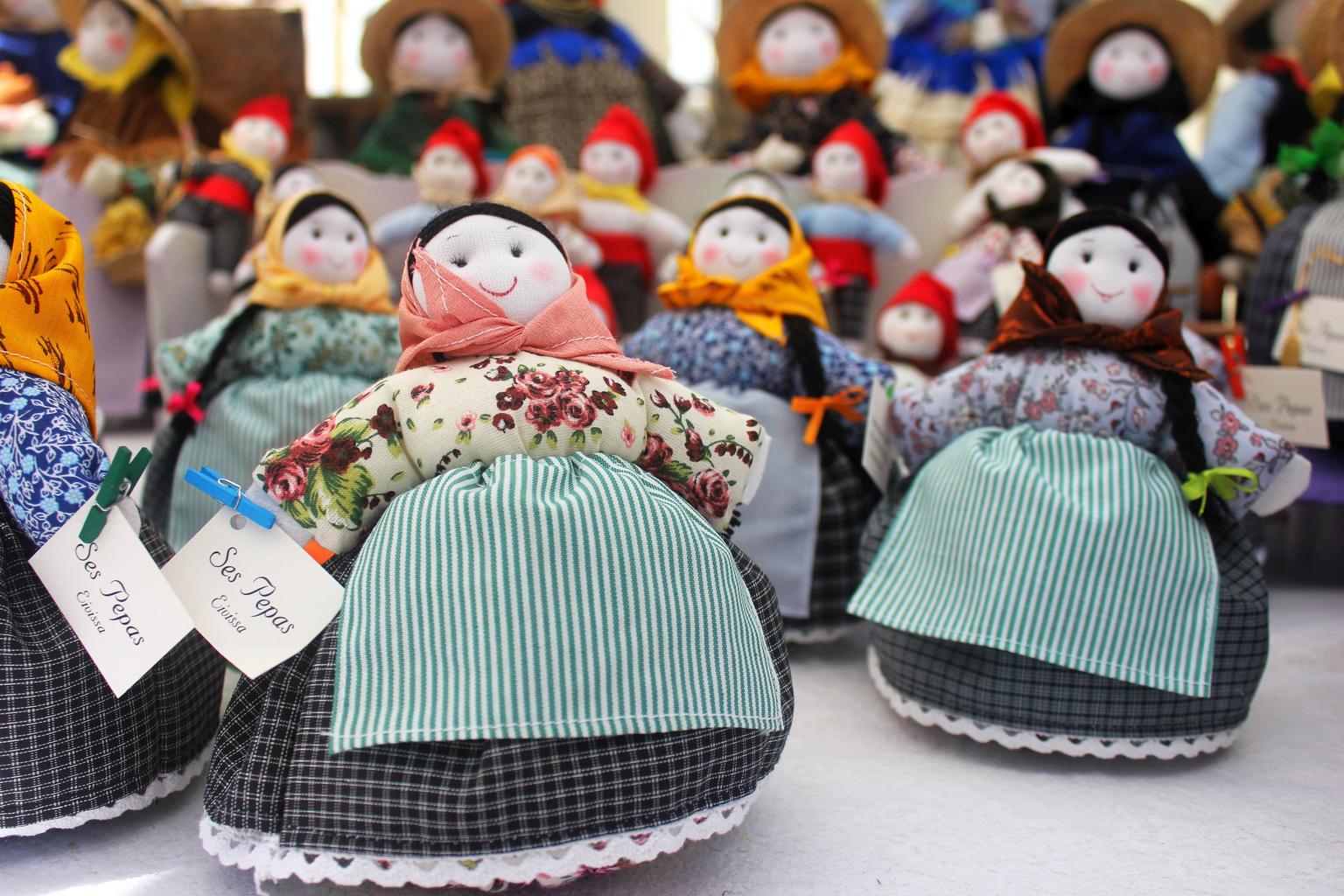- Abstract
- Employment rate of women aged 15-64 in craft occupations (percentage of working-age female employment population)
- Employment rate of women aged 15-64 in craft occupations (percentage of working-age female employment population) (Worldwide)
- Employment rate of women aged 15-64 in craft occupations (percentage of working-age female employment population) (World, latest year)
- Reference
Abstract
Employment rates of women aged 15-64 in craft occupations vary widely across regions and countries. As per the 2020 data, Pakistan recorded the highest in this category at 12.4%. This indicates that craft occupations in Pakistan are an important source of employment for women. The craft industry also provides employment opportunities for women and preserves traditional skills and culture, especially in developing countries. Past trends have shown that employment rates in craft occupations are strongly influenced by the economic development and educational level of the region. For example, in regions and countries where crafts are thriving, the proportion of women working in craft occupations is relatively high. On the other hand, in developed countries, craft occupations tend to be niche fields and employment rates remain low. In addition, many of the jobs offered by the craft industry are non-regular, and there can be challenges with working conditions and income stability. Overall, the employment rate of women in craft occupations varies depending on the country’s cultural background, economic situation, and industrial structure, so it is important to understand the characteristics of each country.
Employment rate of women aged 15-64 in craft occupations (percentage of working-age female employment population)
Looking at data from 1981 to 2020, there is a notable variation in employment rates in craft occupations for women aged 15-64. In particular, Morocco recorded a peak of 56.5% in 2005, but the current employment rate is 87.9%, a significant increase from that peak. This change reflects the importance and growth of the craft industry in Morocco. Morocco’s craft industry is based on traditional artisanal techniques, and its handicrafts in particular are highly regarded both domestically and internationally. This led to more women taking up craft professions and increasing their employment rate. The craft industry is an important sector that provides employment opportunities and promotes economic independence for women, especially in developing countries. However, employment rates in craft occupations show different trends in other regions and countries. In developed countries, the craft industry tends to be a niche sector and employment rates remain relatively low. Additionally, as economies develop, craft occupations often need to adapt to evolving technologies and changing markets. Overall, female employment rates in craft occupations depend heavily on a country’s culture, economic situation and industrial structure. The example of Morocco is an example that shows the importance of the employment opportunities that the craft industry offers to women, and requires a regional analysis.


The maximum is 56.5%[2005] of Morocco, and the current value is about 87.9%
Employment rate of women aged 15-64 in craft occupations (percentage of working-age female employment population) (Worldwide)
Based on data from 1981 to 2021, trends in employment rates in craft occupations for women aged 15-64 have notable characteristics. In particular, Morocco recorded the highest employment rate of 56.5% in 2005, and the current employment rate stands at 87.9%. This increase indicates the importance of Morocco’s craft industry and the growing involvement of female workers. Morocco’s craft industry is thriving, with traditional handicrafts and clothing production that are deeply rooted in local communities. Women play a key role in the industry and often earn an income through their craft work. The craft industry is a key sector supporting women’s employment in the local economy, and its growth encourages women to participate in the labour market. This trend is seen in other developing countries too, where crafts provide employment opportunities for women, while in developed countries craft occupations remain niche and employment rates are relatively low. Furthermore, as the economy develops, the craft industry needs to adapt to changes in the market and faces technological innovation and international competition. Overall, employment rates in craft occupations for women aged 15-64 depend heavily on a country’s economic situation, culture, and industrial structure. The example of Morocco gives some insight into the impact and growth of the craft industry on women’s employment.


The maximum is 56.5%[2005] of Morocco, and the current value is about 87.9%
Employment rate of women aged 15-64 in craft occupations (percentage of working-age female employment population) (World, latest year)
Based on 2021 data, the maximum employment rate in craft occupations for women aged 15-64 is in Moldova at 10.9%, while the average is 5.04% and the total is 30.2%. The data show that craft occupations have a certain importance in women’s employment, but overall employment rates remain relatively low. Moldova is an example of a country where the craft industry plays a particularly important role and has a high female participation in the workforce. Moldova’s high employment rate reflects the demand for traditional handicrafts and the continued retention of skills by women in this sector. However, in other countries, craft occupations tend to be niche and therefore employment rates are lower. With an overall total of 30.2%, craft occupations still contribute to women’s employment in many regions, but employment rates in craft industries vary widely across regions and countries. In developing countries, craft occupations tend to play an important economic role, whereas in developed countries, the position of craft occupations is different and employment rates tend to be lower. As such, we can see that the employment rate of women in craft occupations is strongly influenced by each country’s economic situation and cultural background.


The maximum is 10.9% of Moldova, the average is 5.04%, and the total is 30.2%



Comments